Visitors at a party receive a message from beyond that informs them, "There is a devil here!" and chaos follows. ‘Just before he died, the photographer of this film, Jack O' Hea, saw an article by Tony Rose, FACI, about the very first year of the Ten Best Competition and so this 'lost' film was rediscovered. It was made in 1934, just two years after Kodak had introduced the 8mm gauge. Music and 'devilish sound effects' were added by Jack O'Hea in 1978. These were revised and re-tracked for the IAC Library by the late Leslie Germany, FACI. The story, by John Burke, relates how the visitors at the Blackmores' party (one of whom is played by the director, Stanley Comber) receive a spirit-message that: 'There is a devil here!'. They link hands round the table and the hostess is attacked’ (EAFA Database).
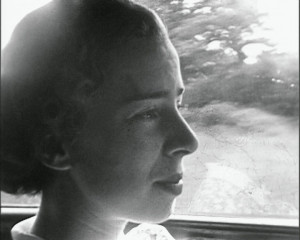
"The tragic story of a young romance torn apart by an ill-fated trip to the seaside. A man grieves the loss of his wife, urged by a friend to 'try to live off the memories of her'. But all he can recall are the events leading up to her death, shown as vivid, point-of-view flashbacks. A weekend trip to Brighton and rural Sussex is full of love and laughter, until tragedy strikes on the return journey, leaving the man alone and struggling to cope" (EAFA Database).
"A tale of a misguided farm boy who gets into trouble trying to get his girl in the big city." Minnesota Historical Society.
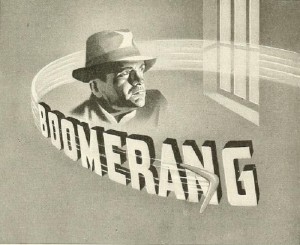
"Boomerang is a simple, direct and hard hitting drama with a moral. Caught in lean times, a young man is laid off from his factory job. Lusting blindly for revenge, he kidnaps his boss's little daughter and sets off down the long, lonely road of the hunted fugitive. Days stretch into weeks, but still he eludes capture, as his patient little prisoner slowly melts his resentment with kindness and childish trust. At last, won over by the warmth of her love, he goes recklessly forth to get a doll that she wanted, only to meet death in a blaze of gunfire. The boomerang of revenge has come full circle. In this rather specialized drama, Chester Glassley has done a good job with a difficult story. The buildup is slow but relentless. The long series of outdoor hideouts is convincingly haunted with fear and menace, and the movie maker has done much to enhance their mood with an adroit use of his camera. Perhaps most outstanding, however, is the genuine portrayal of the little girl." Movie Makers, Dec. 1940, 602.
"Boomerang is an excellent example of 8mm filming at its best. The plot of this story film concerns a valuable necklace given to a married woman by her secret lover, and how she tries to get her husband to "find" it after she has tried to plant it in a most unusual manner" PSA Journal, Sept. 1966, 34.
"This film opens when Ann’s swastika necklace arrives back from the jewelers. Next we see Jim and Ann spoon at a beach party, until a jealous tiff causes her to walk off into the arms of a car-owning Lothario. On a nearby heath, Ann escapes from her randy driver and walks off alone. Next day, Jim, learning that Ann is missing, grabs his pistol. On the heath, he finds Ann's swastika on the ground and sees her bound and gagged by gypsies. They get their comeuppance and Jim gets his Ann. Robert G Torrens, the producer, makes a cameo appearance as a gypsy kidnapper in the latter part of this film" (BFI Player Online).
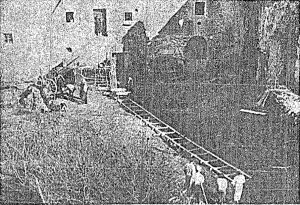
"Film a soggetto"/Fiction film
"Il esso è descritto, attraverso infiniti particolari, la storia di un fanciullo traviato, che dopo un avventuroso vagabondaggio, viene rinchiuso in un Riformatorio giudiziario per l’espiazione della pena che gli è stata inflitta in seguito ad un reato da lui commesso. Ne seguano le trasformazione spirituale finché lo vediamo restituito alla società riabilitato."
"It describes, through infinite details, the story of a misguided child, who after adventurous vagrancy, is locked up in a reformatory for the expiation of the sentence imposed on him as a result of a crime he committed. Spiritual transformation follow until we see him returned to society rehabilitated."
The film was directed by special courtesy of the Minister di Grazia e Giustizia, nel R. Riformatorio giudiziario di Nisida (Napoli)
—Notizario delle sezioni cinematografiche dei gruppi universitari fascisti a cura del ministero della cultura popolare, September 1938 p. 11

"Warren S. Doremus has evinced fresh imagination in The Call of the Lonely Wood, a dramatic story of a venture into the unknown by a young man who has only a sketchy map to guide him. He fails of his goal on the first attempt, but he sets out once more after recovery from exposure and exhaustion. The hurdles he overcomes and the excitement of his discovery of each of the three triangles that serve as clews are convincingly pictured and supplemented by a well written narrative that is dramatically presented. Interesting dissolve effects support the mysterious quality of the film's theme, and suspense is maintained by excellent cutting and editing. A well rounded musical score was arranged by Arthur Brown, and Robert Carabell played the main role with competence." Movie Makers, Dec. 1944, 494-495.
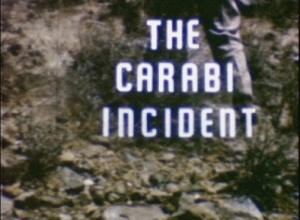
"Once again Harry W. Atwood has used the desert locales of the Southwest and his mastery of outdoor color filming to mount a dramatic and exciting action picture. Although The Carabi Incident is truly an incident rather than a full-fledged photoplay, it does manage to include an abandoned mine, a lost prospector, a worried young girl and her companion — and both a happy and a tragic ending! The production is enriched with Mr. Atwood's usually fine selection of camera angles and suspenseful editing. For these reviewers, however, an excess of dialog subtitles was a drag on the film's development." Movie Makers, Dec. 1952, 341.
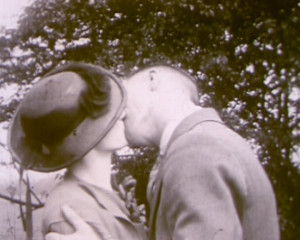
"Amateur filmmaker and cinema historian H.A.V. Bulleid presents this story of young love blossoming in the city, only to be interrupted by a trip to the country. As love blossoms between a young couple, every moment apart thinking of each other. Finally meeting again for a trip to the cinema, they share a pleasant moonlit stroll, full of anticipation for the day ahead. Catching a bus the following morning, the pair disembark to find a secluded spot in the countryside. Moving over increasingly rocky terrain, they come to a small mountain lake. But in striving for a better vantage point, the man slips and hits his head on a rock. With his face covered in blood and struggling to see, he and the girl must find their way out of seclusion and back to the city" (EAFA Database).
Total Pages: 12